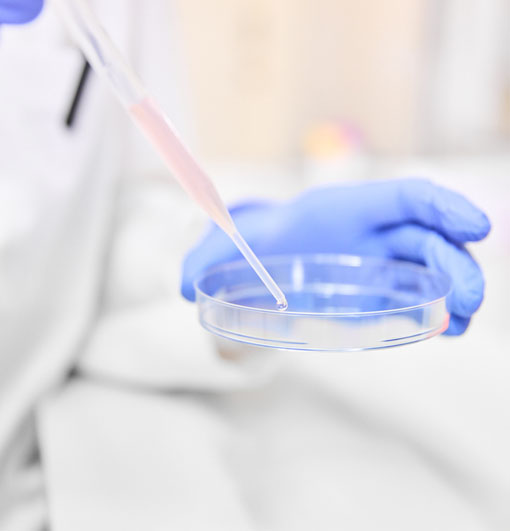In-Vitro Fertilization(IVF)
IVF aids couples with fertility issues by fertilizing eggs with sperm in a lab to create embryos. These embryos are then transferred to the woman’s uterus for potential pregnancy. IVF is a widely used and effective assisted reproductive technology.


IVF
This procedure involves the fertilization of eggs with sperm outside of the uterus in order to create an embryo that will be placed back inside the uterus. It is by far the most successful way to get pregnant.
To start, the ovaries are stimulated with hormones identical to the ones made in the brain. This is done to produce many eggs as opposed to a single egg that is normally grown with each menstrual cycle. Once mature, the eggs are removed and fertilized with sperm. The resulting embryos are then placed inside the uterus or kept frozen and preserved for future IVF procedures. The entire process usually takes from 10 to 12 days.
To start, the ovaries are stimulated with hormones identical to the ones made in the brain. This is done to produce many eggs as opposed to a single egg that is normally grown with each menstrual cycle. Once mature, the eggs are removed and fertilized with sperm. The resulting embryos are then placed inside the uterus or kept frozen and preserved for future IVF procedures. The entire process usually takes from 10 to 12 days.
FAQ

How successful is IVF
The success rates of IVF vary depending on age and circumstances. Generally, the success rates for the 20-30 age group are higher than those for individuals aged 35 and above. Success rates are also influenced by factors such as the specific conditions of the patients, the treatment techniques used, and the experience of the medical team.
The Process of In Vitro Fertilization IVF?
- Step One – Ovulation Induction
- Step Two – Egg Retrieval
- Step Three – Fertilization and Embryo Culture
- Step Four – Embryo Transfer
How To Prepare For IVF?
- Eat a healthy, well balanced diet.
- Start taking prenatal vitamins.
- Maintain a healthy weight.
- top smoking, drinking alcohol and recreational drugs.
- Avoid travel to any countries or regions that may put you at risk of exposure to Zika or other significant infectious diseases, which could delay treatment.
- Reduce or eliminate your caffeine intake.
What is single embryo transfer?
Single embryo transfer is a procedure in assisted reproductive technology where only one embryo is selected and transferred into the uterus during an IVF cycle. This approach aims to reduce the risk of multiple pregnancies while still offering a good chance of successful implantation and pregnancy.
Get In Touch
If you have any requirements, please get in touch with us at your earliest convenience, and we will reach out to you promptly.
Address
21545 Hawthorne Blvd / Pavilion B / Torrance CA 90503
